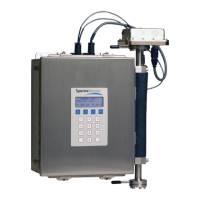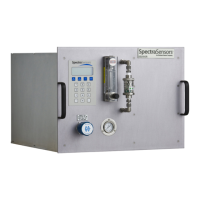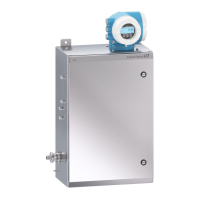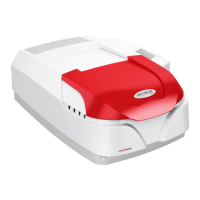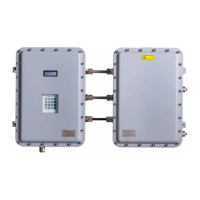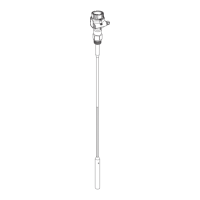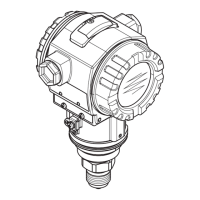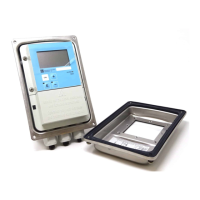Do you have a question about the Endress+Hauser SpectraSensors SS500e and is the answer not in the manual?
Explains the fundamental principles behind the analyzer's operation.
Details the sophisticated signal detection technique used by the analyzers.
Addresses actions for hazardous situations during analyzer service.
Provides instructions to mitigate associated risks during operation.
Details precautions for handling process gases during maintenance.
Outlines procedures for suspected leaks of toxic gas.
Warns about risks associated with electrical shock and how to avoid them.
Advises on controlling ignition sources in hazardous areas.
Outlines the steps for mounting and connecting the analyzer and SCS.
Lists necessary hardware and tools for completing the installation process.
Details the procedures and considerations for physically mounting the analyzer.
Provides specific steps for selecting a location and mounting the analyzer.
Explains how to connect the analyzer to a power source safely.
Details requirements for connecting protective and chassis grounds.
Step-by-step guide to connecting the analyzer to its power supply.
Instructions for connecting power to the enclosure heater unit.
Explains how to connect current loop, serial, and digital outputs/alarms.
Step-by-step instructions for connecting output signals and alarms.
Explains how to switch the current loop output between source and sink modes.
Details how to adjust the current loop signal for proper calibration.
Provides instructions for connecting the sample supply and return gas lines.
Step-by-step guide for connecting the sample supply tubing.
Step-by-step guide for connecting the sample return tubing.
Describes the process for initiating the SCS after installation.
Explains how to start the analyzer using the process sample stream.
Provides procedures for shutting down the Sample Conditioning System.
Discusses common causes of erroneous measurements due to air leaks.
Explains reasons for contamination and line cleaning.
Provides procedures and precautions for cleaning analyzer mirrors.
Details the process and tools needed to replace a pressure sensor.
Step-by-step guide for replacing the pressure sensor unit.
Lists common instrument issues and their potential solutions.
Provides information on how to contact technical service for support.
Lists information to prepare before contacting technical support.
Details the process for obtaining a Service Repair Order (SRO).
Explains the fundamental principles behind the analyzer's operation.
Details the sophisticated signal detection technique used by the analyzers.
Addresses actions for hazardous situations during analyzer service.
Provides instructions to mitigate associated risks during operation.
Details precautions for handling process gases during maintenance.
Outlines procedures for suspected leaks of toxic gas.
Warns about risks associated with electrical shock and how to avoid them.
Advises on controlling ignition sources in hazardous areas.
Outlines the steps for mounting and connecting the analyzer and SCS.
Lists necessary hardware and tools for completing the installation process.
Details the procedures and considerations for physically mounting the analyzer.
Provides specific steps for selecting a location and mounting the analyzer.
Explains how to connect the analyzer to a power source safely.
Details requirements for connecting protective and chassis grounds.
Step-by-step guide to connecting the analyzer to its power supply.
Instructions for connecting power to the enclosure heater unit.
Explains how to connect current loop, serial, and digital outputs/alarms.
Step-by-step instructions for connecting output signals and alarms.
Explains how to switch the current loop output between source and sink modes.
Details how to adjust the current loop signal for proper calibration.
Provides instructions for connecting the sample supply and return gas lines.
Step-by-step guide for connecting the sample supply tubing.
Step-by-step guide for connecting the sample return tubing.
Describes the process for initiating the SCS after installation.
Explains how to start the analyzer using the process sample stream.
Provides procedures for shutting down the Sample Conditioning System.
Discusses common causes of erroneous measurements due to air leaks.
Explains reasons for contamination and line cleaning.
Provides procedures and precautions for cleaning analyzer mirrors.
Details the process and tools needed to replace a pressure sensor.
Step-by-step guide for replacing the pressure sensor unit.
Lists common instrument issues and their potential solutions.
Provides information on how to contact technical service for support.
Lists information to prepare before contacting technical support.
Details the process for obtaining a Service Repair Order (SRO).
| Measurement Principle | Tunable Diode Laser Absorption Spectroscopy (TDLAS) |
|---|---|
| Device Type | Gas Analyzer |
| Mounting | Wall or pipe mounting |
| Measured Gas | Carbon Dioxide (CO2), Methane (CH4), Hydrogen Sulfide (H2S), Ammonia (NH3) |
| Response Time | Typically < 2 seconds (application dependent) |
| Operating Temperature | -20 to +50 °C (-4 to +122 °F) |
| Operating Pressure | Up to 10 bar (145 psi) |
| Power Supply | 24 VDC |
| Communication Protocol | Modbus RTU, Ethernet |
| Enclosure Rating | IP66 / NEMA 4X |
| Outputs | 4-20 mA |
| Measurement Range | Depends on the gas being measured (e.g., O2: 0-100%, CO2: 0-100%, CH4: 0-100%) |
